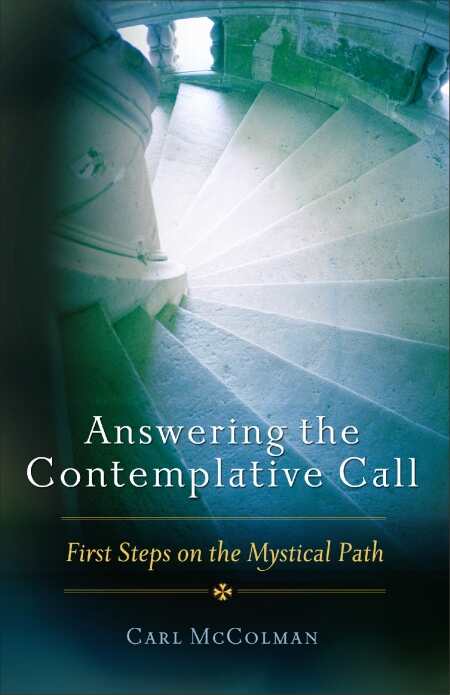
Answering the Contemplative Call
First Steps on the Mystical Path
Buddy Holly put forth truth concisely in his song “It’s So Easy (to Fall in Love).” Equally adept at making the mystical real and attainable, Carl McColman, in Answering the Contemplative Call: First Steps on the Mystical Path, sets out how easy it is to begin a serious search for a relationship with God.
McColman likens the spiritual quest to a journey—a metaphor, he notes, often used by writers in the Christian tradition. Quoting Ralph Waldo Emerson, McColman shares: “What lies behind us and what lies before us are tiny matters compared to what lies within us.” Essentially, McColman has written a readily understandable travel guide that may be referred to at any time along the way, and that will lead the traveler to a deeper understanding of his or her journey.
The book is organized into three parts. The first, “Recognizing the Call,” describes how the traveler becomes aware that the journey has begun. McColman assumes that a person who picks up this book has a desire for “something more” in their life. He calls this desire, in the broadest sense, a longing for God. This portion of the book explores the various ways in which a person is awakened to a deeper understanding of life’s mysteries, giving examples of how others, such as Thomas Aquinas, have experienced the moment in their own lives. The second section of the book, “Preparing for the Journey,” explains that the territory to be traversed is interior to the traveler. One particularly helpful chapter, “Do Your Research,” introduces the traveler to the writings of several prominent Christian mystics. The final section, “Embarking on the Journey,” gives specific advice on how to travel (through prayer and contemplation) and admonishments on what contemplation does not provide: “For the spiritual life to reach its full potential, the interior/mystical dimension needs to be balanced by the external/social dimension.”
Throughout Answering the Contemplative Call, McColman balances the discussions of spiritual matters with concrete advice for the reader. At the book’s beginning he says: “I invite you to join with me, not merely in reading or thinking about the mystical life, but in actually engaging with the wisdom of the mystics.” He then offers three things a person can do to begin their contemplative journey: (a) make an effort to spend ten minutes each day in silence, (b) pray each day in whatever way is comfortable, and do something each day to improve some aspect of their life. McColman notes: “Intimacy with God is more than just a nice thought. The mystics proclaim that this intimacy is available to all of us, but we do have to make the effort to receive the gift that is freely handed to us.” The three simple actions will, McColman argues, dispose a person to receive the gift.
Carl McColman is the author of several other books, including The Big Book of Christian Mysticism. He works as the manager of the gift store at the Monastery of the Holy Spirit, a Cistercian monastery in Conyers, Georgia.
Reviewed by
John Senger
Disclosure: This article is not an endorsement, but a review. The publisher of this book provided free copies of the book to have their book reviewed by a professional reviewer. No fee was paid by the publisher for this review. Foreword Reviews only recommends books that we love. Foreword Magazine, Inc. is disclosing this in accordance with the Federal Trade Commission’s 16 CFR, Part 255.
